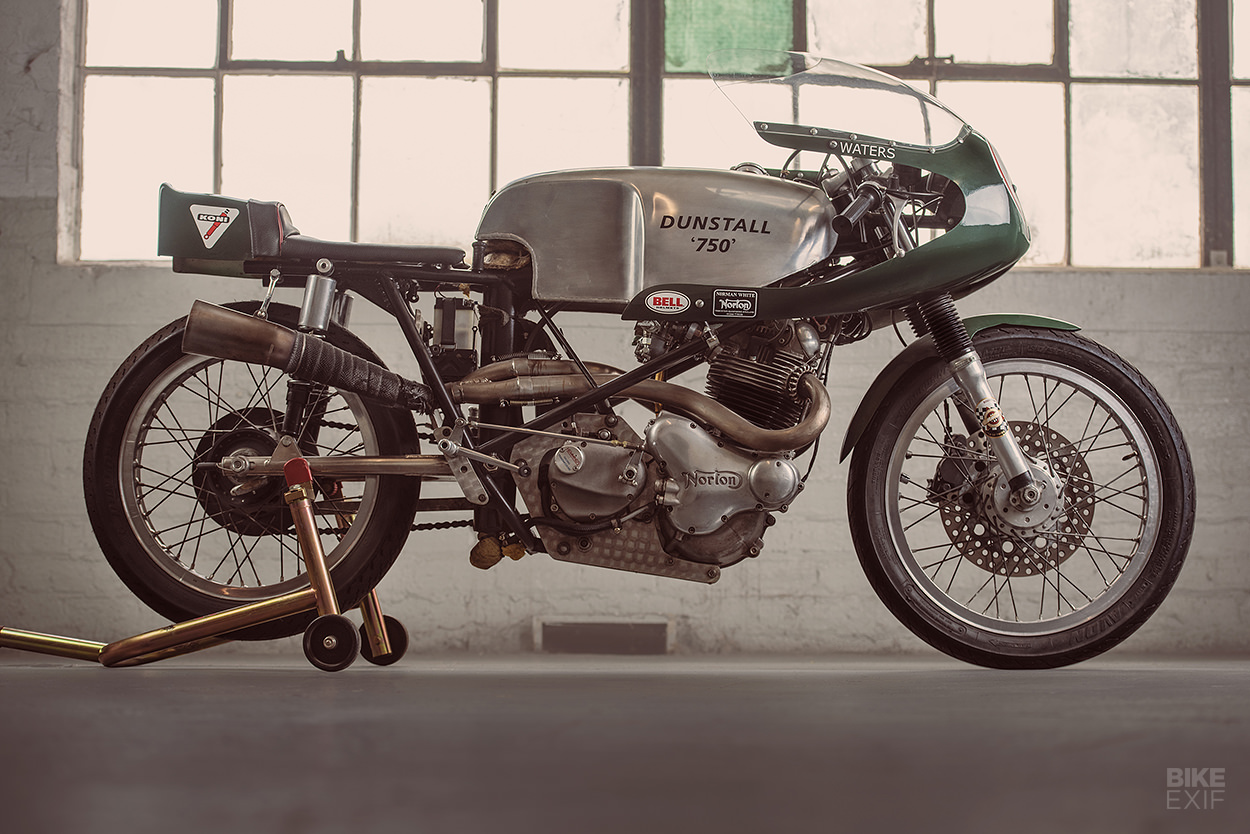
Modern race bikes are shiny, perfect things: they have the air of being extruded from 3D printers in a hermetically sealed laboratory. But in days of yore, the typical racer was usually a little battered and bruised, with unique welding marks and bodged-up brackets and bodywork.
We have to admit to preferring them that way, and this Dunstall ‘Drainpipe’ Norton is the perfect example. It’s no Italian supermodel, but it’s still very compelling to look at.
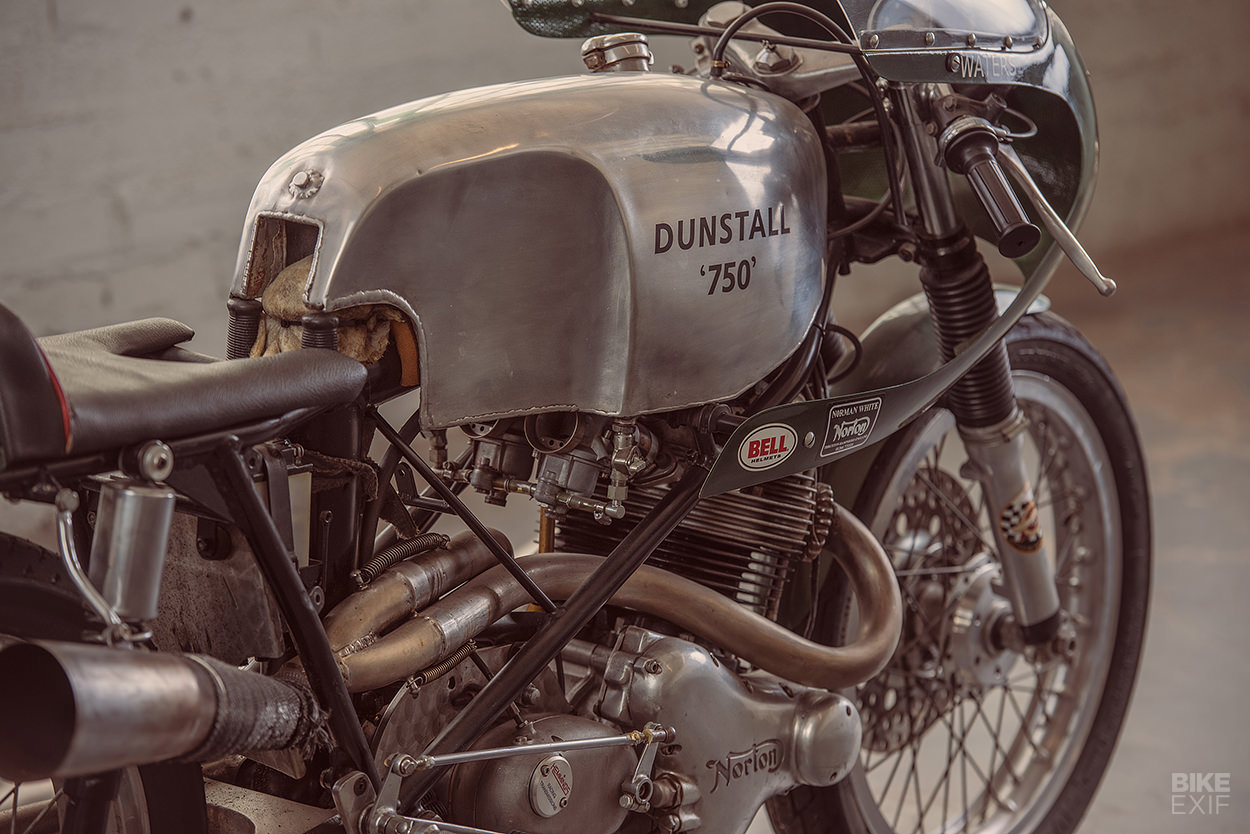
In the 1960s and 1970s, Paul Dunstall was one of the most famous tuners and race bike builders in Britain. His Norton Domiracers were a force to be reckoned with on the track, and after complaints from competitors, Dunstall ended up moving up into the production classes as a homologated manufacturer.
But despite the increased competition, that didn’t stop a Dunstall from winning the Isle of Man Production TT with Ray Pickrell on board.
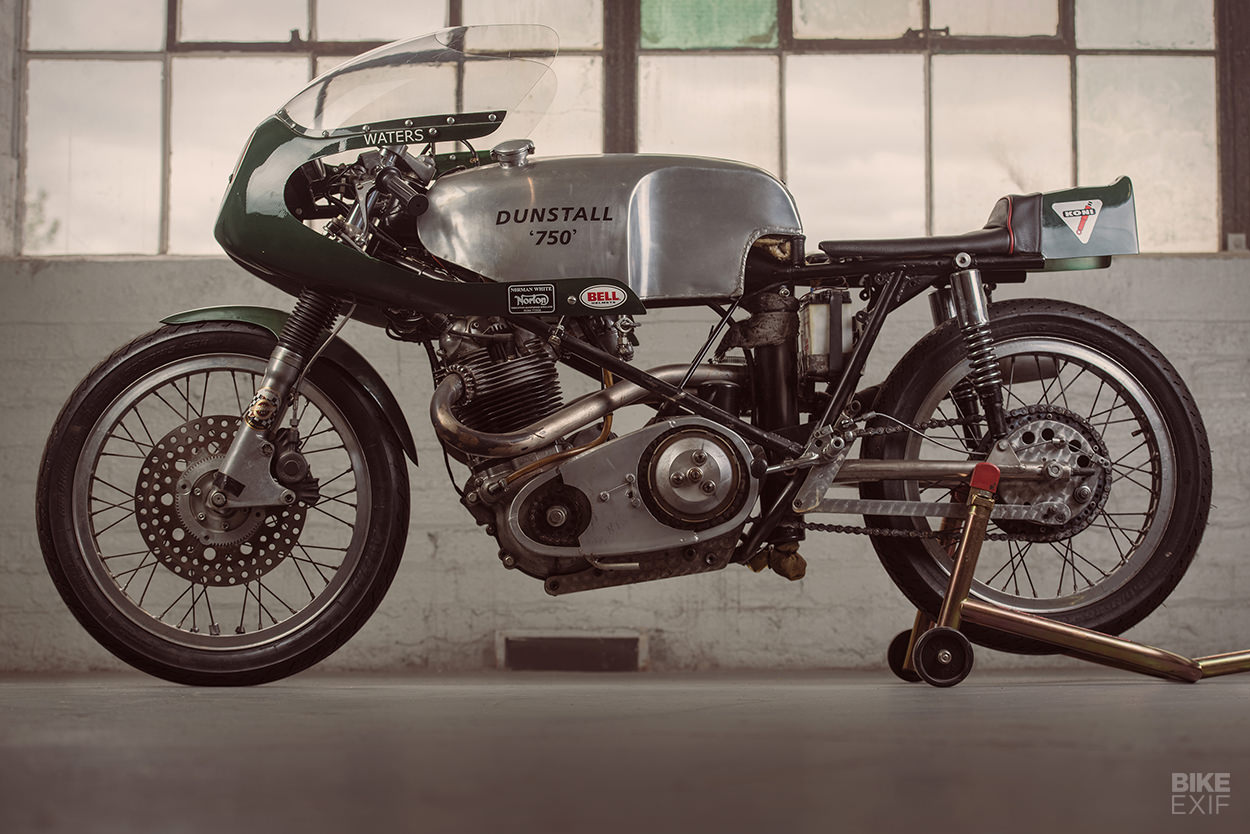
This particular Dunstall belongs to American Jamie Waters. He’s one of the world’s top collectors of the marque—and a man who likes to ride and even race his bikes, rather than just park them up.
Dunstall built this Drainpipe (or ‘Spine Back’) for the 1969 racing season, and then sold it in the early 1970s to the Swiss Norton importer, who continued to race it in European events. Jamie bought the bike nearly 15 years ago, after seeing it advertised on a vintage race bike website.

He decided not to ‘restore’ it, but preserve the patina. “Fluids, valve adjustment, tires, and fitting a removable belly pan are the only things I’ve done to it,” he says.
“The bodywork is as it was when I purchased the bike. The bike continued racing for years after being purchased from Dunstall. I know it had at least one tip over due to the crushed megaphone that was with the spares … Fiberglass bodywork items are racing consumables.”
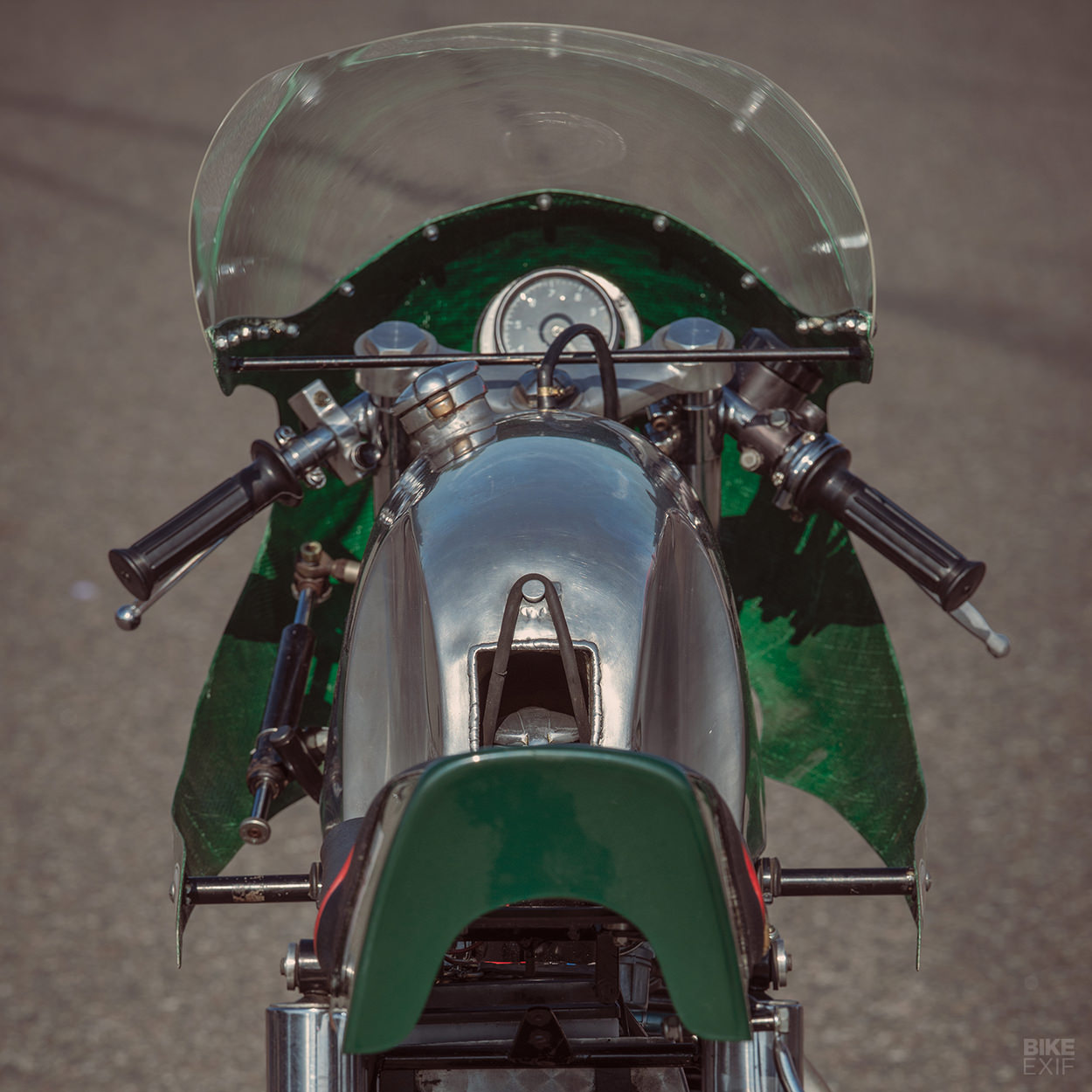
The ‘spine back’ and ‘drainpipe’ nicknames come from the three-inch central chassis tube, which is augmented by one-inch bracing tubes. The central tube doubles as both the swing arm pivot and oil tank for the dry sump engine—helping to keep dry weight down to barely 300 pounds, even with a conventional iron cylinder barrel.
Designed by Eddie Robinson, also of Seeley fame, the frame was intended as a replacement for the more conventional twin downtube ‘Lowboy’ Domiracer. It was designed to handle the 72 hp being squeezed from Dunstall’s 745cc Norton-based twins, but was still tied together well, and felt impossibly narrow for the time.
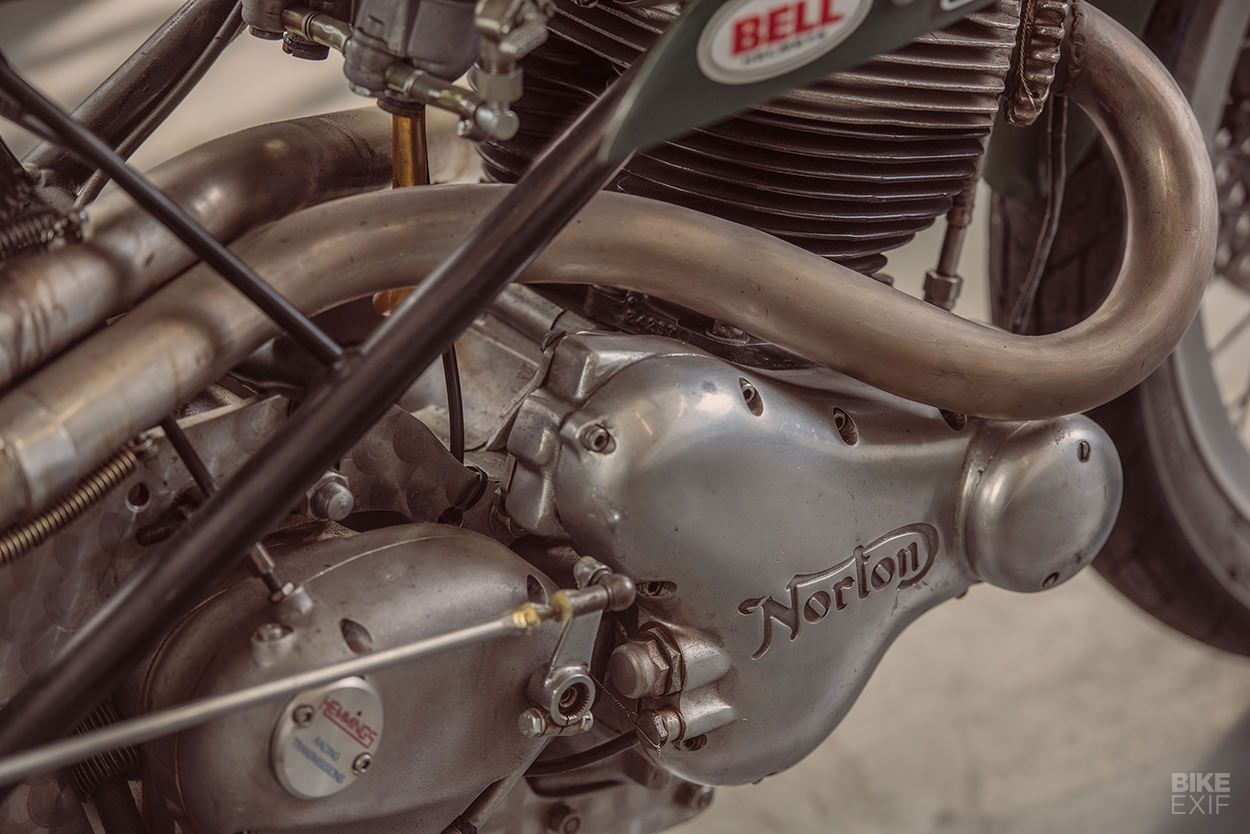
“I have large-format photos showing the bike in front of Dunstall Equipe,” says Jamie. “The originals are large enough to identify my bike, based on frame and tank welds, bracketry, and other bits and bobs.”
“There was no fairing on the bike at that time. But it was in a late configuration with a Blair exhaust, and dual Dunstall front brakes, and so on.” Today the Norton retains the Blair exhaust, but the front brake is a period original Norton Production Racer item—with an 11.5-inch single disk.
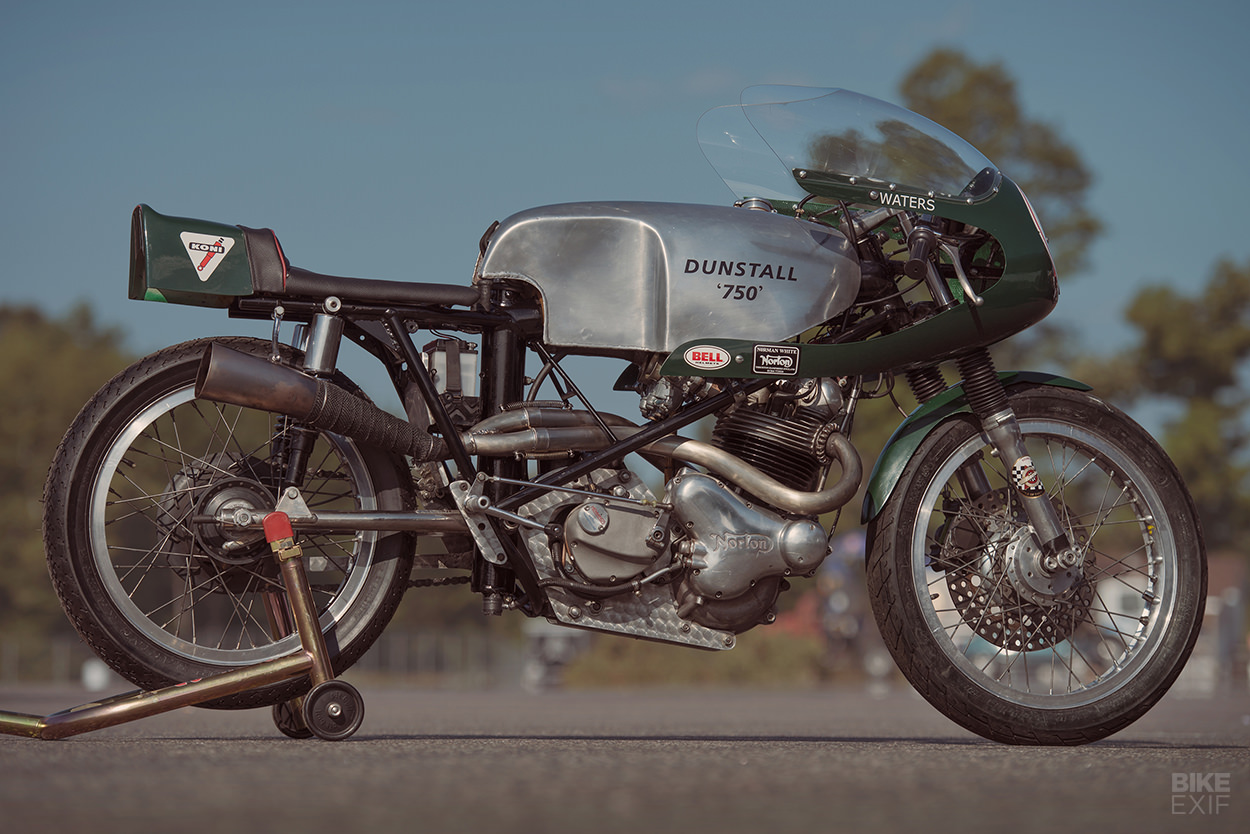
“The front brake was swapped out a long time ago when the bike was being raced in Europe,” Jamie reveals. “It’s an original NVPS Lockheed Racing unit, as used on the Production Racers of 1970-71.”
“The cast-into-the-slider calipers of the Dunstall brake in the original photographs were not suitable for racing: the heat of the calipers transferred directly to the slider and the fork oil. This was the same setup Dunstall was offering on his street Commandos. A terrible idea—and probably something that was simply fitted at the time of sale.”
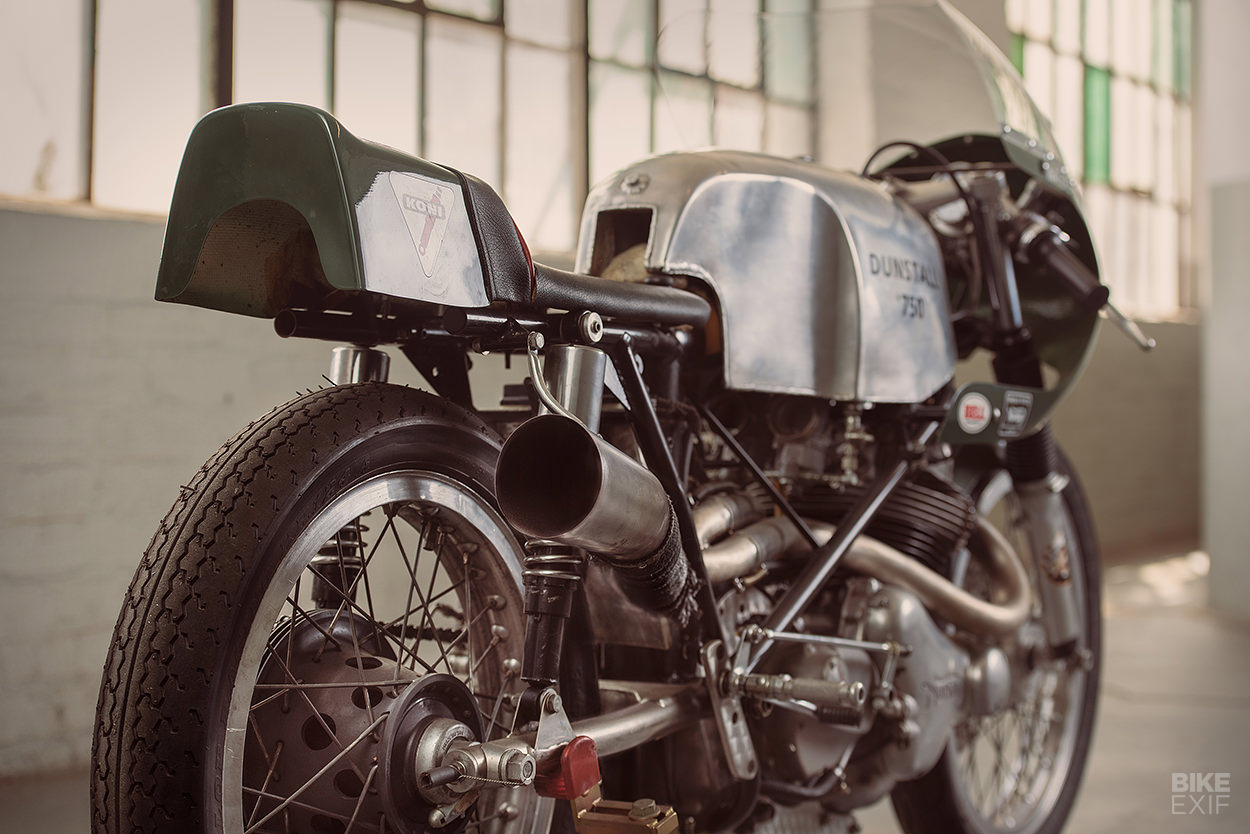
These Dunstalls are extremely rare, but luckily for us, crack photographer Doug MacRae has managed to capture Jamie’s bike in detail, half a century after it first hit the tracks in Europe.
The number of original machines purported to have been built for the 1969 season has seemingly grown from three to six over the years, but Paul Dunstall has reportedly confirmed that they made only three spine frame bikes—or solus frames maybe—in total.
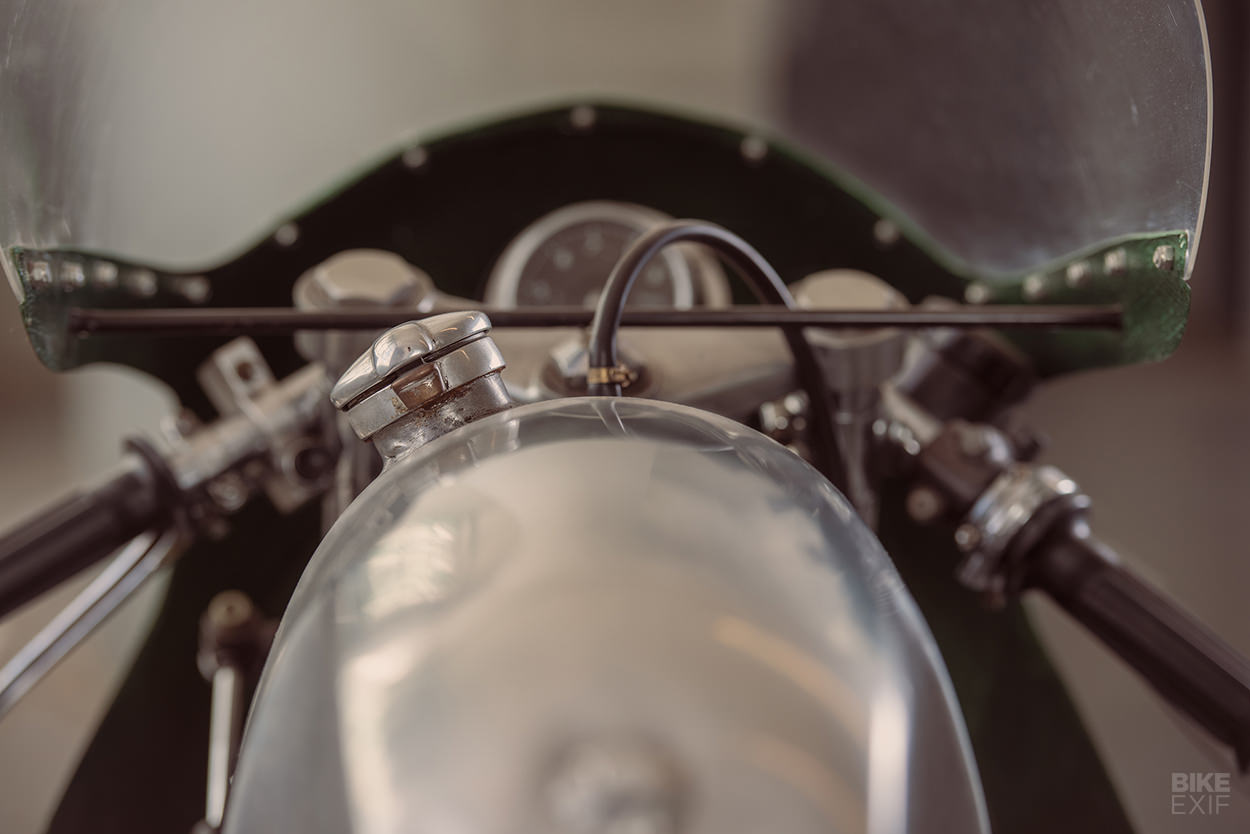
One is in the National Motor Museum in Beaulieu in England, one is the bike shown here, and Jamie has seen photos of another that he believes to be genuine, in the States.
Jamie has not raced his Dunstall in competition, but he’s done vintage track days on it. “The turn-in is fantastic—no doubt the extreme forward position of the engine helps that,” he reports.
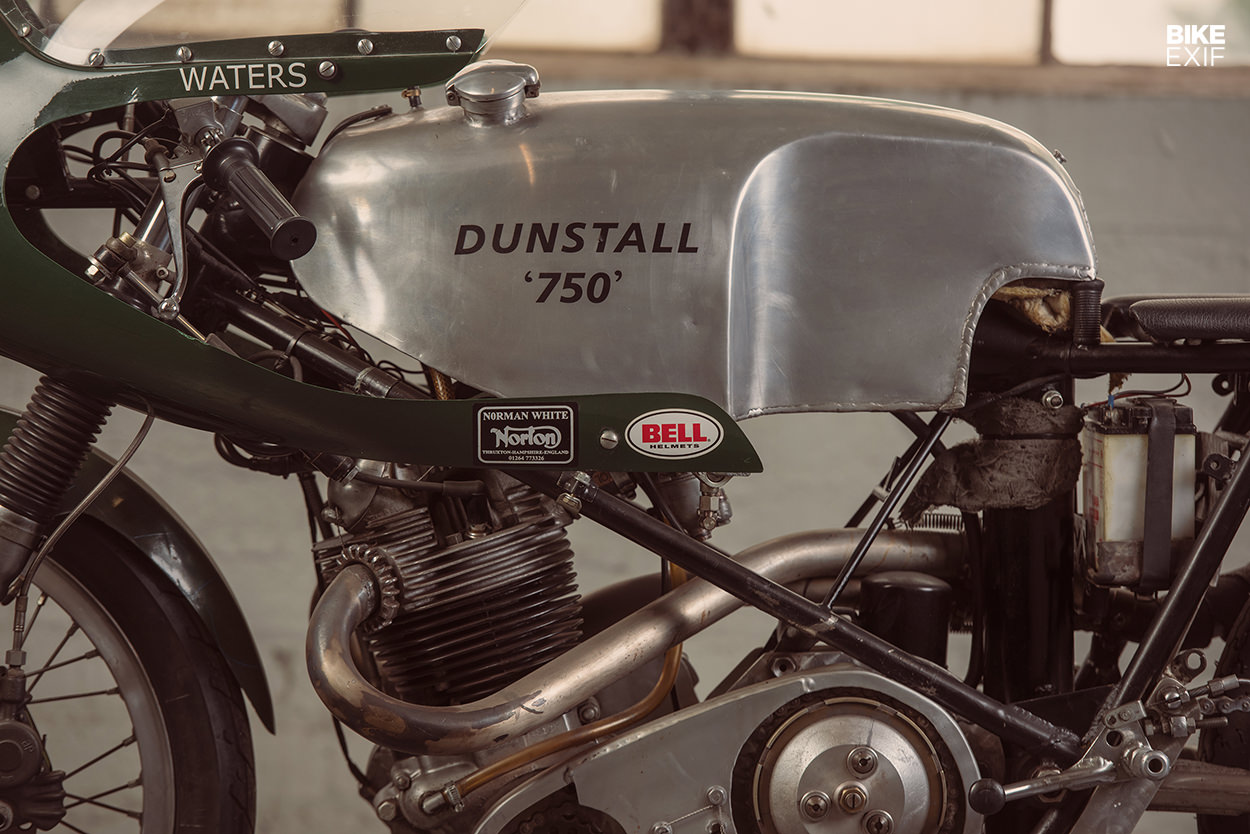
“That said, there’s no free lunch, and corner exit can be a handful if the throttle is applied too early. If you’re Ray Pickrell, no sweat. If you’re Jamie Waters, much sweat!”
Jamie Waters | Images by (and thanks to) Douglas MacRae | Instagram | Print store
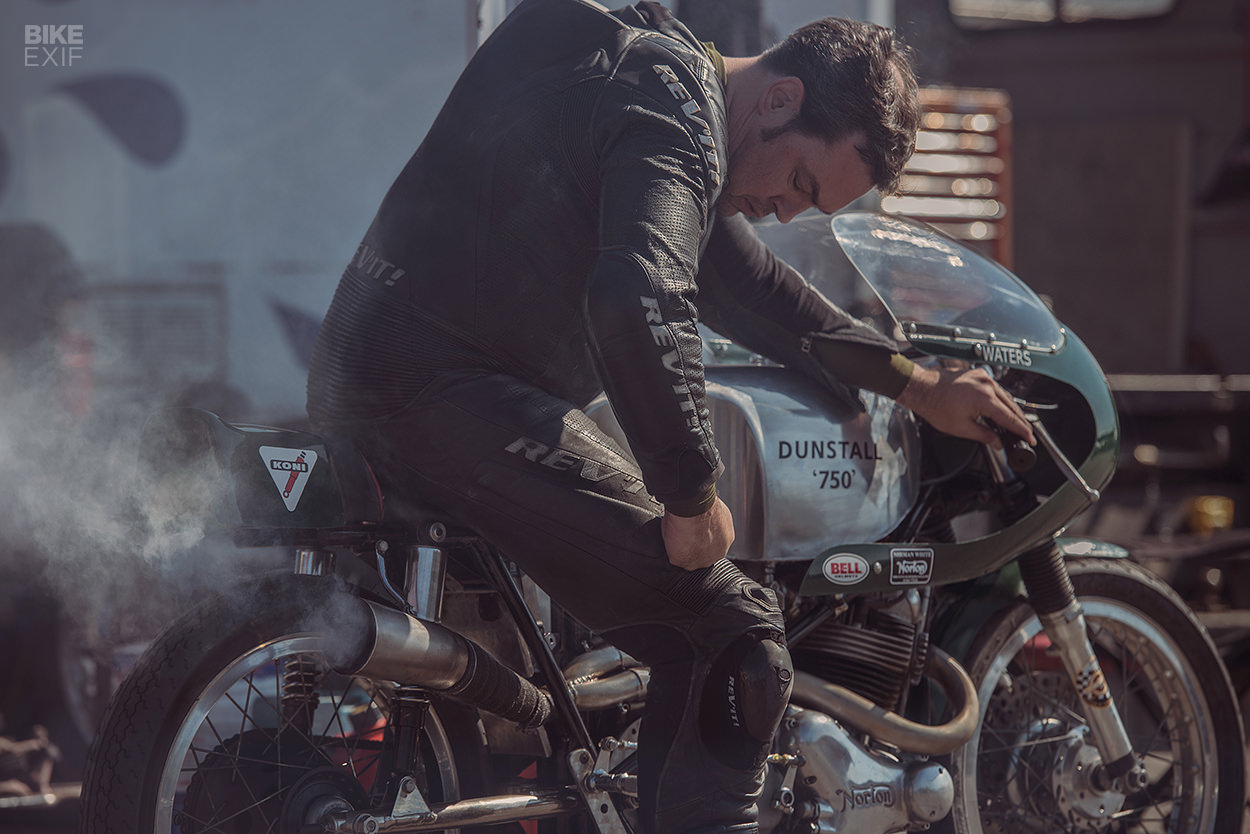
from Bike EXIF https://ift.tt/3eV8PqM
No comments:
Post a Comment